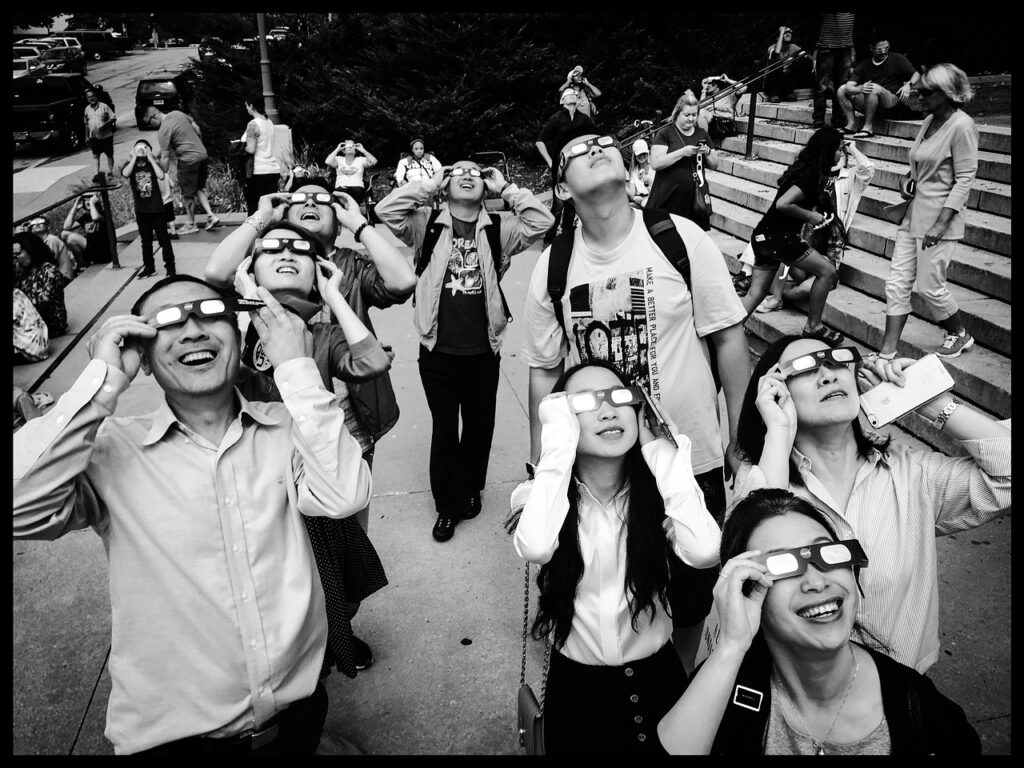The Risks of Viewing the April 8 Solar Eclipse Without Proper Protection
As the much-anticipated April 8 solar eclipse approaches, excitement and curiosity are in the air. This celestial event, where the moon passes between the Earth and the sun, obscuring the latter, promises to be a spectacular sight. However, amidst the enthusiasm, it’s crucial to remember the significant risks associated with viewing the eclipse without special protective glasses.
Potential Damage to the Eyes
The primary concern of looking directly at the sun during an eclipse without proper eye protection is the risk of solar retinopathy. This condition occurs when the retina, a layer at the back of the eyeball that processes visual information, is damaged by direct sunlight. The intense solar rays can burn the retinal tissues, leading to temporary or even permanent vision loss. Symptoms of solar retinopathy include blurred vision, a dark or empty spot in the center of your vision, increased sensitivity to light, and distorted colors.
Why Eclipses Pose a Greater Risk
During a solar eclipse, the moon covers a significant part of the sun, making it less bright and seemingly safe to look at. This phenomenon can dangerously deceive people into staring at the eclipsed sun without realizing the potential harm. The reduced brightness does not decrease the sun’s harmful ultraviolet (UV) and infrared (IR) radiation levels, which can cause retinal burns. Furthermore, the reduced intensity of light entering the eye can cause the pupil to dilate, allowing more harmful radiation to reach the retina.
The Importance of Proper Eclipse Glasses
Eclipse glasses are specifically designed to protect eyes from the harmful effects of looking directly at the sun. They are made with solar filters that block out 99.999% of the sun’s visible light and UV and IR radiation, making it safe to observe the eclipse. It’s crucial to use eclipse glasses that meet the international safety standard ISO 12312-2 for filters for direct viewing of the sun. Regular sunglasses, even very dark ones, or homemade filters are not safe for looking at the sun because they do not provide adequate protection against IR and UV radiation.
Safe Viewing Practices
To safely enjoy the April 8 solar eclipse, adhere to the following guidelines:
- Ensure your eclipse glasses are undamaged and meet ISO 12312-2 safety standards.
- Put on your eclipse glasses before looking up at the sun and do not remove them while looking at the sun.
- Do not use regular sunglasses, smoked glass, X-ray film, or DVDs as substitutes for eclipse glasses.
- If you wish to photograph the eclipse, do not look at the sun through the viewfinder of a camera, telescope, or binoculars without proper solar filters.
- Watch the eclipse indirectly through a pinhole projector or a solar viewing projection box.
- If you have young children, opt for watching the NASA livecast instead.
The April 8 solar eclipse offers a unique opportunity to witness one of nature’s most awe-inspiring displays. However, the beauty of this celestial event should not overshadow the importance of safeguarding our vision. By adhering to recommended safety practices and using proper protective eyewear, viewers can enjoy the spectacle without risking their eye health. Let’s experience the wonder of the eclipse, but let’s do it safely.





